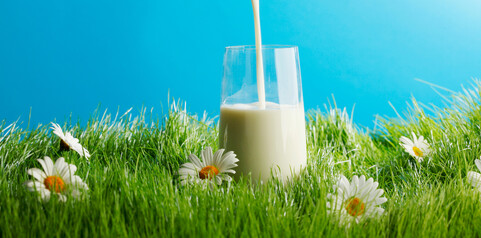Summer is here! And for many families, that means sunny walks, park days, and the occasional ice cream stop. And you know what? That’s okay!
Sharing an ice cream with your child isn’t just about the treat itself. It’s a small moment of joy, connection, and even sensory regulation on those hot and bothered days.
The coldness can soothe an overheated body, the sweetness offers comfort, and the shared experience creates memories, especially for children who thrive on moments of closeness and sensory grounding.
But don’t forget: while ice cream can feel cooling, it doesn’t actually hydrate the body very well, and neither do most sugary drinks. As temperatures rise, our children’s mood, energy, and even concentration can be affected by something as simple as heat and dehydration. Headaches, crankiness, or tiredness often creep in when fluids are low. Which of course, we want to avoid as parents and carers, so our children (and us) can enjoy the day and the summer.
So here’s a simple summer tip to avoid a sunny day, become a stormy one: say yes to the ice cream, and yes to the water too. Pop a bottle in your bag, encourage regular sips before and after treats, and model that cooling off means both comfort and care by doing it yourself too.
After all, parenting isn’t about perfection, it’s about presence. And sometimes, that looks like two licks of a melting cone… followed by a big glug of water.
A Special Bottle
Encouraging taking in fluids for anyone in a position of care, has other relational and positive parenting benefits.
It's true! It can easily be underestimated what small actions and gestures can mean or communicate for some children.
Have you considered what it means to give your child a special water bottle for outings or school?
It can be a Symbol of Containment and Care
The water bottle becomes a transitional object of sorts, not dissimilar to a comfort toy, symbolising the parent’s ongoing presence and nurturing, even when not physically nearby.
Over time, the child learns to self-regulate through what was once externally provided from a parent or caregiver by extension with this containing this object.
Supports Internalisation of a Nurturing Object
Repeatedly offering the bottle in caring ways helps the child internalise the idea of being looked after and encourages the development of self-care behaviours rooted in early attachment experiences.
This nurturance isn’t just about physical health, but about the message: "You are worth taking care of. I see your needs. I will help you meet them."
Builds Trust in the Reliability of the Other
Consistently providing the bottle builds a sense of reliability and safety, crucial aspects in the development of secure attachments.
The bottle becomes part of a predictable rhythm, soothing anxieties and promoting trust in the caregiver’s availability and attunement.
Facilitates Gradual Autonomy Through Modelling
Initially, the parent is the external regulator, providing reminders, fetching the bottle, encouraging drinking.
Over time, through repetition and attunement, the child begins to identify with the caregiving role and takes it on themselves. They start to remember, reach for, and refill the bottle independently.
Encourages Bodily Awareness and Self-Attunement
Children often struggle to notice or respond to internal cues like thirst or overheating. Offering the bottle regularly helps the child tune into their body, promoting somatic awareness and helping them distinguish between emotional and physical discomfort.
This early awareness contributes to emotional regulation and mind-body integration later in life.
What the Act Communicates:
“I see your needs before you can fully express them.”
“You are worth preparing for and thinking about.”
“Taking care of yourself is important — and I’ll help you learn how.”
“Even when it’s hot, chaotic, or uncomfortable, I’m here to help you feel okay.”
Why Consistency Matters:
Reinforces the message that care is not conditional on mood, behaviour, or circumstances.
Allows the child to develop object constancy, the ability to hold onto the sense of the caregiver's presence and care, even when they're not physically there.
Gradually fosters the child’s capacity for self-care, through identification with the caring parent or carer.
But My Child Won’t Drink Water!
Well, that is difficult, because most sugary drinks and fizzy drinks, and some drinks with sweeteners aren’t the most effective at hydrating compared to water… as other properties contained in such alternatives, speed up or increase urine output, and do not encourage slow hydration processes. Additionally many hydration drinks, contain higher than necessary levels of sugar...
So what else can help?
(That also has a second possible benefit we can think of)
Milk!
Milk is a good hydrator similar to water.
So if your child or you can, and like to drink milk, enjoy!
Milk (and other dairy products like yoghurt) contains a high percentage of water — around 85–90% in semi-skimmed milk — so it does contribute to overall fluid intake.
In fact, studies (e.g. from St. Andrews University, 2016) found that milk may hydrate the body even better than water in some cases, because:
It contains electrolytes (like sodium and potassium), which help the body retain fluid
It releases more slowly into the stomach than water, so it provides longer-lasting hydration
Did You Know...
Milk May Help with Sleep?
So if you or your littler humans are struggling to sleep in the ehat, have you tried:
It contains tryptophan
Milk contains tryptophan, an amino acid that helps the body produce serotonin and melatonin, key hormones involved in sleep regulation.It supports bedtime rituals
The act of drinking milk at night (especially as part of a regular, calming routine) can create a psychological association with rest, which supports sleep readiness — particularly helpful for children.It stabilises blood sugar overnight
A small amount of protein and carbohydrate before bed can help stabilise blood sugar levels and reduce nighttime waking, especially in young children or those sensitive to hunger cues.
Warm vs. Cold Milk What’s Better in Hot Weather?
Warm milk:
Can have a soothing, calming effect, especially if part of a familiar nighttime routine.
May help relax the body by signalling rest and warmth, even in warmer months.
Works more on a psychological level, many people associate it with comfort and sleepiness. Think about babies, how they may feel relieved, or even sleepy after a milk feed. Unconscious associations can be active enough to encourage a more natural ability to rest and sleep.
Cold milk:
Feels refreshing in hot weather and may help cool the core temperature slightly.
May be preferred by those who find warm drinks unappealing in summer.
Still provides tryptophan and hydration, with less sensory warmth.
Does Temperature Affect Sleep Benefit?
Not significantly. The sleep-promoting properties of milk (tryptophan, calming ritual, stable blood sugar) are present regardless of temperature. What matters more is personal preference, sensory comfort, and consistency.
In hot weather, cold milk may be more appealing, especially if overheating is disrupting sleep. But for some, warm milk remains comforting, and the psychological benefits may outweigh physical discomfort.
So there we have it…
When you can’t get your children (or yourself) to drink water, consider milk, studies suggest it hydrates us well, helping us retain fluids better. And, Milk before bed can support sleep through biological, psychological, and sensory means. In hot weather, cold milk might be the better option to avoid overheating, while still enjoying the same nutritional and sleep-related benefits.
For those who are non-diary consumers, some fortified soy milks, provide similar nutritional benefits as Diary Milks such as those mentioned above.
Read our other blog about about the importance of sleep: https://www.teenagementalhealth.co.uk/blog/post/21939/the-importance-of-sleep/


